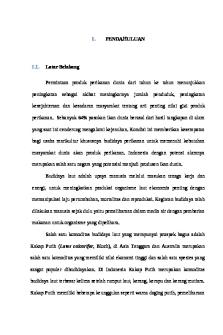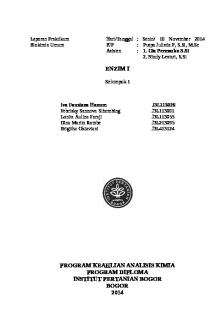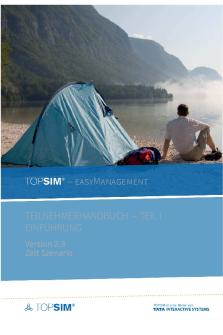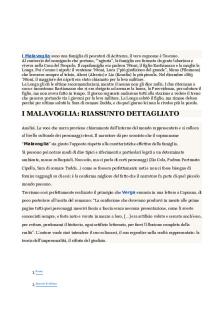Kehpsy I koe Teoriat PDF

| Title | Kehpsy I koe Teoriat |
|---|---|
| Author | Nita Sorsa |
| Course | Kehityspsykologia |
| Institution | Tampereen yliopisto |
| Pages | 3 |
| File Size | 112 KB |
| File Type | |
| Total Downloads | 71 |
| Total Views | 134 |
Summary
Download Kehpsy I koe Teoriat PDF
Description
Keskeiset teoriat
Kiintymyssuhdeteoria: John Bowlby: Kiintymysjärjestelmä: organisoi käyttäytymistä, joka edistää hengissä säilymistä ja lisääntymistä (ympäristön vaaroista selviytyminen); biologinen, neuraalinen, evolutiivinen perusta; luonteeltaan kyberneettinen = aktivoituu ja deaktivoituu tarpeen mukaan o Kiintymystyylin jatkuvuus vauvaiästä aikuisuuteen on melko matala, muutoksia havaitaan enemmän kuin jatkuvuutta. o Kiintymysjärjestelmään liittyy hoivan antaminen vanhempi-lapsisuhteessa, eksploraatio ja itsenäinen toiminta sekä pariutuminen ja lisääntyminen. o Kiintymysjärjestelmän perimmäinen tarkoitus on läheisyyden säilyttäminen ja turvan kokeminen uhkatilanteessa. Kiintymystyylit: Mary Ainsworth: turvallinen, turvaton – välttelevä, turvaton – ristiriitainen o Kulttuuriset erot niiden yleisyydessä ovat merkittäviä o
Itseohjautuvuusteoria: Richard M. Ryan ja Edward L. Deci: teoria ihmisen motivaatiosta, hyvinvoinnista ja psykologisista perustarpeista: autonomia (merkityksellisyys, mahd. vaikuttaa/valita), yhteenkuuluvuus (tarve kuulua ja tulla hyväksytyksi osana ryhmää) ja pystyvyyden tunne/kyvykkyys (tunne osaamisesta ja pätevyydestä)
Psykoanalyyttinen teoria:
o
Sigmund Freudin psykoseksuaalinen teoria: Personality as inner qualities that develop in a stagelike manner. Freud believed the personality was formed in first 5 years of life More nature (biology drives development; early experience in the family influences it, too) Passive (humans are influenced by forces beyond their control) Discontinuous (stagelike) Universal Biologically based sexual instincts motivate behavior and steer development through five psychosexual stages, oral to genital
o
Erik Eriksonin psykososiaalinen teoria: Humans progress through eight psychosocial conflicts, from trust vs. mistrust to integrity vs. despair. We all experience stagelike personality changes at similar ages Growth and change continuing through adulthood. Interactionist; nature and nurture equally Active Discontinuous (stagelike) Universal (although stages may be expressed differently in different cultures)
Oppimisteoria: o
B.F Skinnerin behavioristinen oppimisteoria:
o
Albert Banduran sosiaalis-kognitiivinen oppimisteoria: Development is the product of cognition, as illustrated by observational learning and human agency. Personality as behavior that is influenced by situational factors and changes if the environment changes. We should not expect universal stages of personality development or enduring traits. More nurture Active (humans influence their environments) Continuous Context specific
Kognitiivisen kehityksen teoria: o
o
o
o
2
(tabula rasa) Development is the product of learning from the consequences of one’s behavior through operant conditioning. Mostly nurture Passive (humans are shaped by environment) Continuous (habits gradually increase or decrease in strength) Context specific (direction of development depends on experiences)
Jean Piagetin konstruktivismi: (Tabula rasa) Development proceeds through four stages of cognitive development, from sensorimotor to formal operations. Children come to know their world by constructing their own schemes or cognitive structures through active exploration (p.229) Interactionist (maturation interacting with experience guides all through the same stages) Active Discontinuous (stagelike) Universal neuroconstructivism theory: new knowledge is constructed through changes in the neural structures of the brain in response to experiences Lev Vygotskyn sosiokulttuurinen näkökulma: emphasizes cultural and social influences on cognitive development more than Piaget’s theory does. Cognitive development is different in different social and historical contexts. Through guided participation in culturally important activities, children learn problem-solving techniques from knowledgeable partners sensitive to their zone of proximal development. Language is the most important tool that adults use to pass culturally valued thinking and problem solving to their children. Language shapes their thought and moves from social speech to private speech and later to inner speech. Kurt Fischerin dynaaminen taitokehys: Development results from changes in skill levels. Skills reflect what a person can do on a particular task in a specific context
Systeemiteoria: o
o
3
“It is not possible to analyze behavior outside the context in which it occurs. Behavior is not something that a person ‘has’; it emerges from interactions between person and context”. People operate within a developmental range, with higher levels of performance demonstrated within a supportive context and after more experience with a task Skill is both task-specific and context-specific. psychologists need to put development back into its natural context and not study it in isolation.
Bronfenbrennerin bioekologinen malli: Development takes many directions depending on transactions between a changing person and a changing environment. Nature and nurture co-acting, influencing one another Active Both continuous and discontinuous Context specific
James Gibsonin ekologinen havaintoteoria: Everything we need to understand the world around us is available in the environment itself. We can directly detect the affordances of objects what they offer us in terms of how we might interact with them. nature and nurture are integrally related Trait theory: o Big Five personality traits Personality as a set of dispositional traits (the Big Five) that are enduring over time and consistent across situations....
Similar Free PDFs

Kehpsy I koe Teoriat
- 3 Pages

KOE NO Katachi - Iwjdnd
- 11 Pages

I. Architecture, ecriture...I
- 32 Pages

I. PENDAHULUAN I.1
- 35 Pages

PEO I - PEO I
- 24 Pages

Pronomi I - Apuntes Pronombres I
- 25 Pages

Tytan i jego stopy I
- 3 Pages

ENZIM I
- 13 Pages

Modul I
- 7 Pages

Wirtschaftsprivatrecht I
- 18 Pages

Teilnehmerhandbuch I
- 21 Pages

Fundicion I
- 14 Pages

I dittonghi
- 1 Pages
Popular Institutions
- Tinajero National High School - Annex
- Politeknik Caltex Riau
- Yokohama City University
- SGT University
- University of Al-Qadisiyah
- Divine Word College of Vigan
- Techniek College Rotterdam
- Universidade de Santiago
- Universiti Teknologi MARA Cawangan Johor Kampus Pasir Gudang
- Poltekkes Kemenkes Yogyakarta
- Baguio City National High School
- Colegio san marcos
- preparatoria uno
- Centro de Bachillerato Tecnológico Industrial y de Servicios No. 107
- Dalian Maritime University
- Quang Trung Secondary School
- Colegio Tecnológico en Informática
- Corporación Regional de Educación Superior
- Grupo CEDVA
- Dar Al Uloom University
- Centro de Estudios Preuniversitarios de la Universidad Nacional de Ingeniería
- 上智大学
- Aakash International School, Nuna Majara
- San Felipe Neri Catholic School
- Kang Chiao International School - New Taipei City
- Misamis Occidental National High School
- Institución Educativa Escuela Normal Juan Ladrilleros
- Kolehiyo ng Pantukan
- Batanes State College
- Instituto Continental
- Sekolah Menengah Kejuruan Kesehatan Kaltara (Tarakan)
- Colegio de La Inmaculada Concepcion - Cebu


